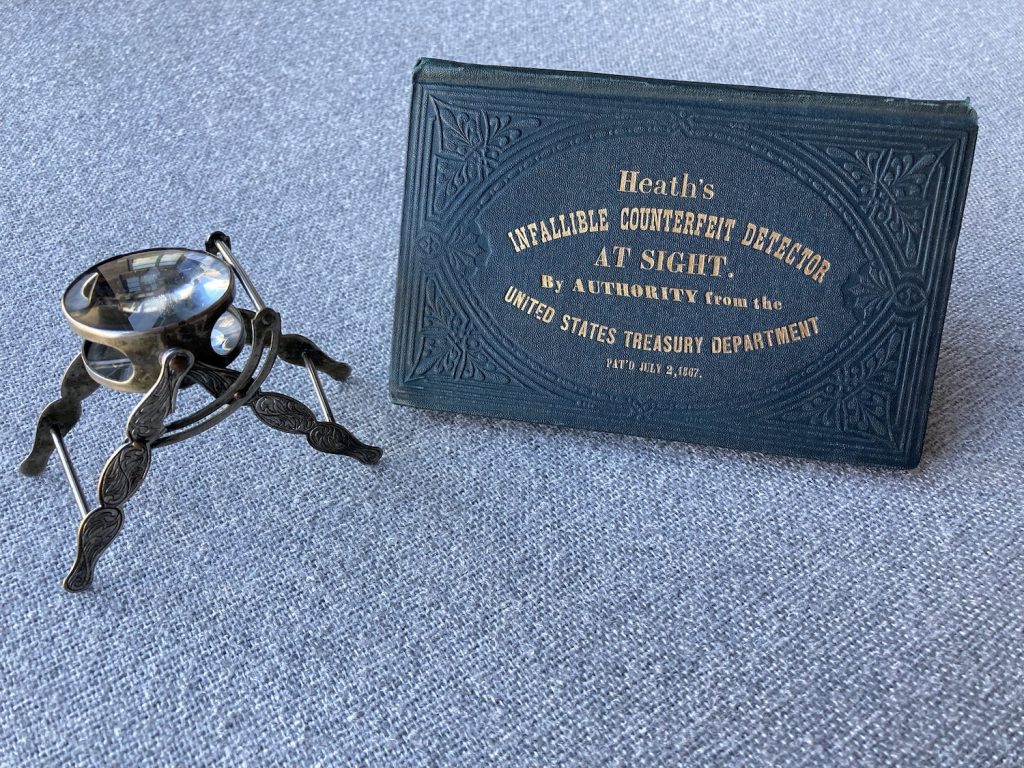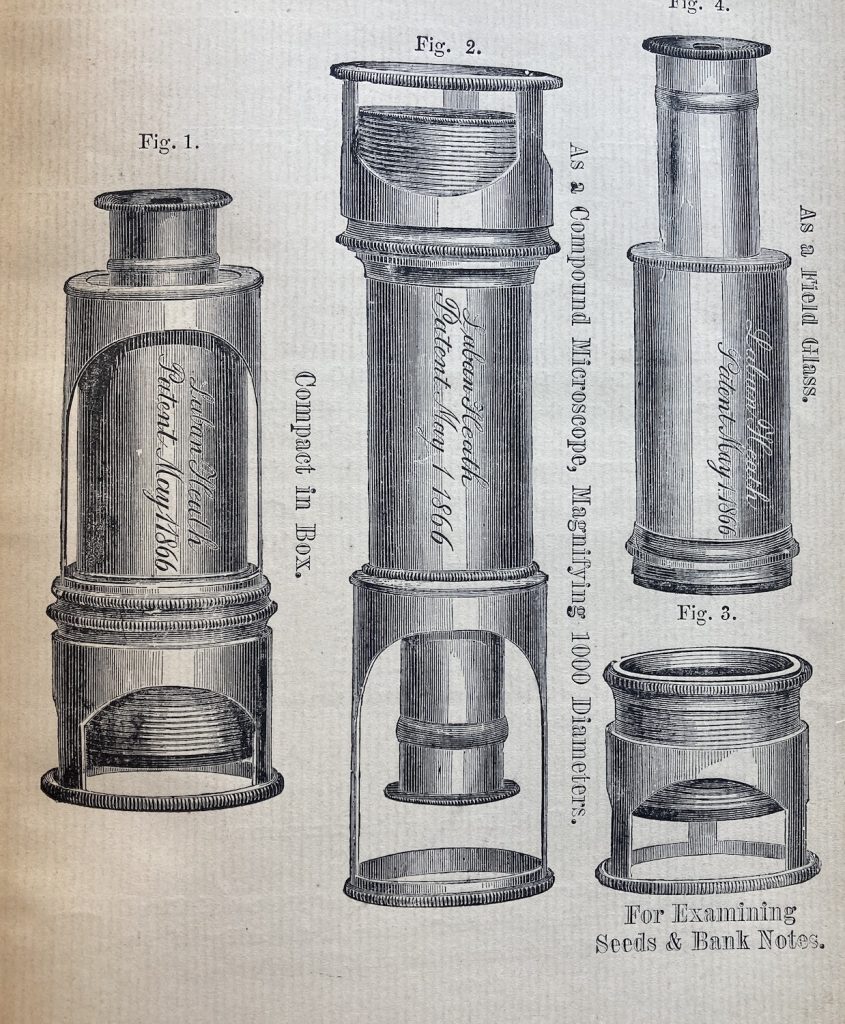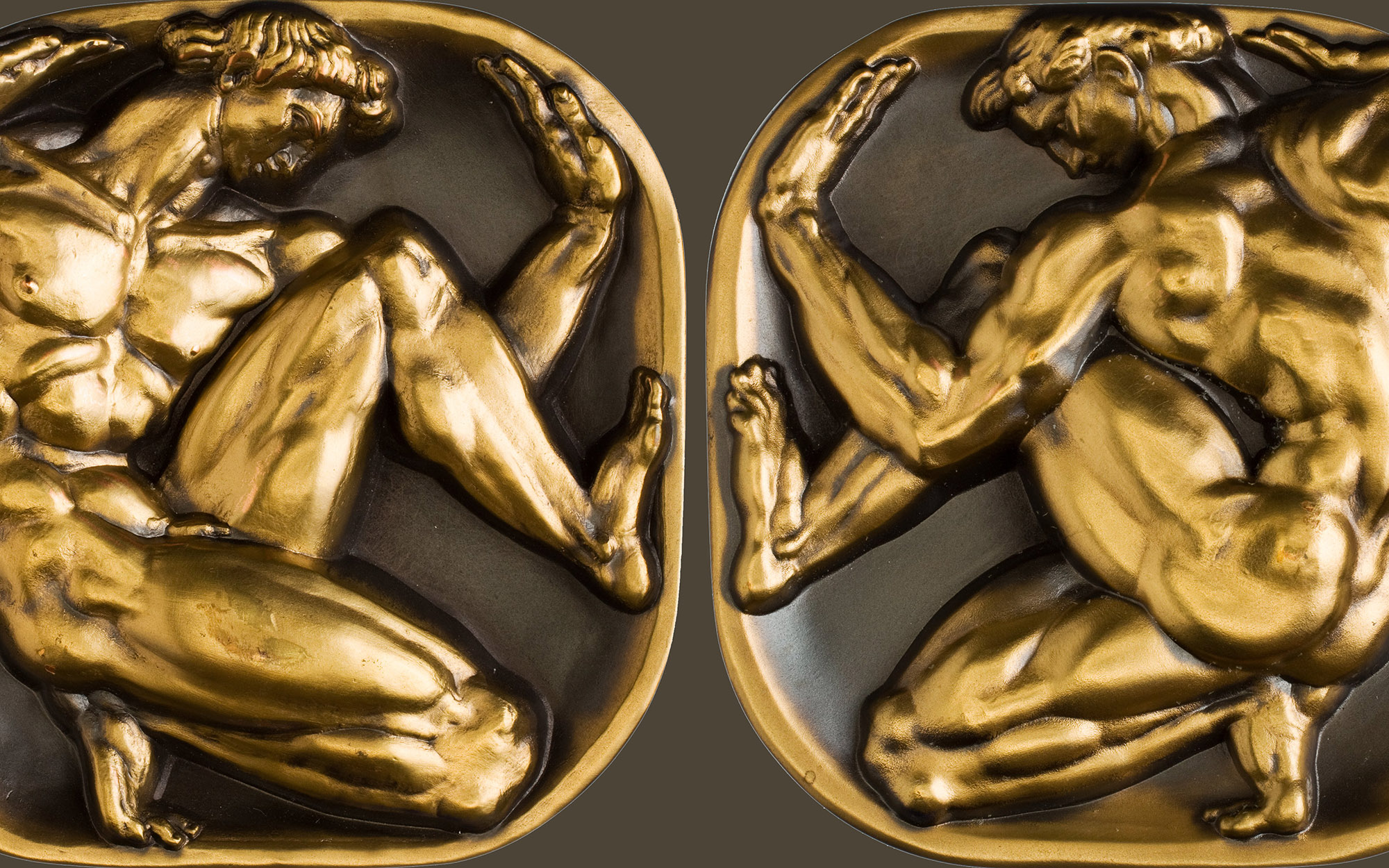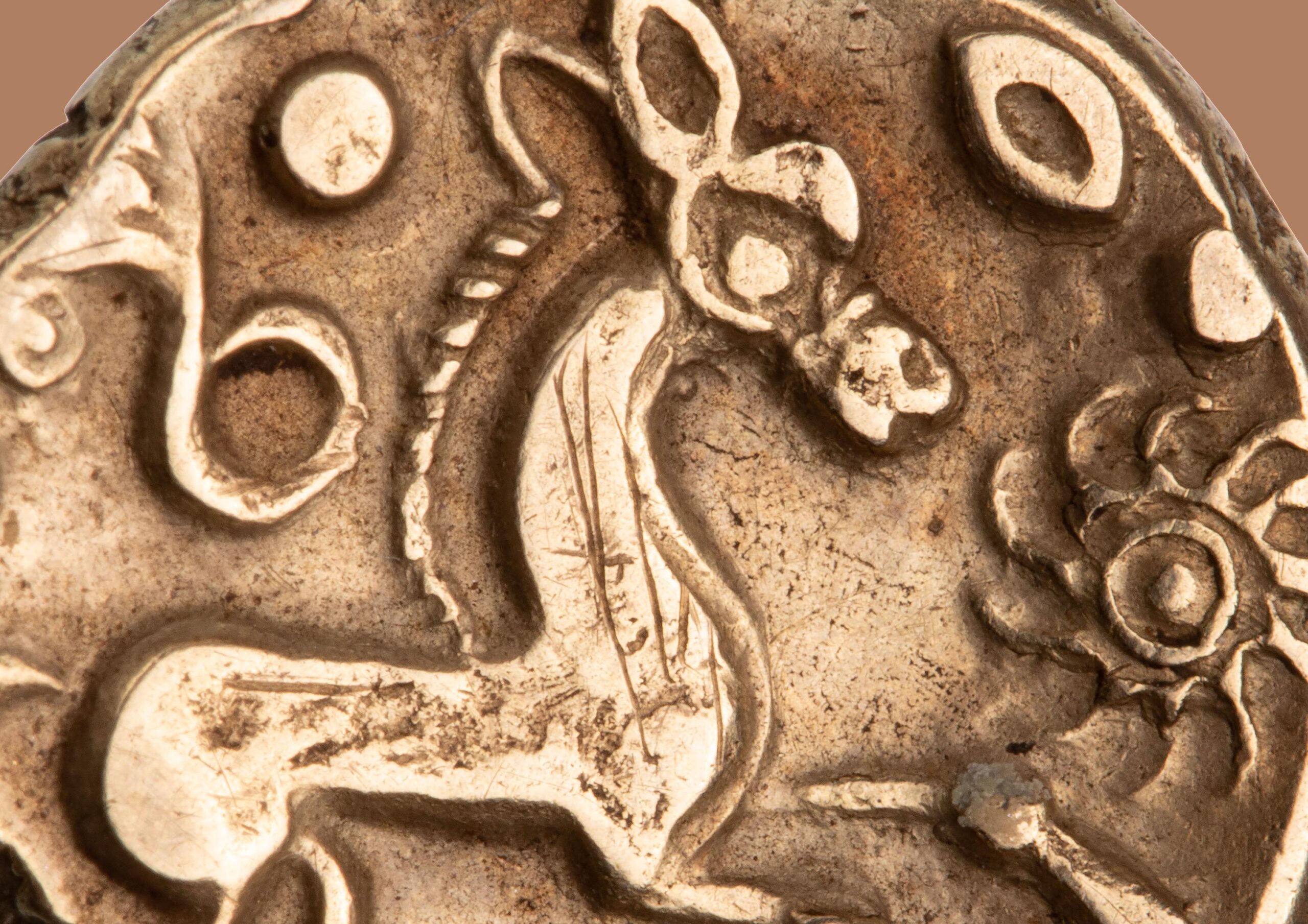Laban Heath’s Improved Adjustable Compound Microscope

The ANS Library and Archives recently acquired an interesting little gadget—one of Laban Heath’s Improved Adjustable Compound Microscopes. Patented by Heath in 1877, he sold it primarily as a tool for examining bank notes—“enabling you beyond a doubt to form a correct judgement of the genuineness of the work.” Ideally, it would be used in conjunction with his Infallible Counterfeit Detector, just one of a number of similar print publications that proliferated in the nineteenth century, helping people determine the real value and authenticity of bank notes.
These publications—bank note reporters and counterfeit detectors—arose at a time when state and territorial banks, large and small, scrupulous and not, were permitted to issue their own bank notes, exchangeable for silver or gold. The resulting variety of notes made the counterfeiter’s job much easier. And the actual value of the notes varied from place to place, regardless of the face value. In fact, a note might circulate from a bank that no longer existed. Bank note reporters and counterfeit detectors helped people make sense of it all.

Heath was a latecomer to the detector business. By the time he published his first counterfeit detector in 1864, the United States was drawing the curtain on the free banking era, inaugurating a new national currency system. But Heath—“a masterful huckster and a skilled political maneuverer,” in the words of the numismatic scholar Eric P. Newman—used his publication to sow doubt about the national notes, propelling his detector into a bestseller. He printed at least 17,000, and possibly as many as 25,000 copies of the first edition alone. He bested his competition by exploiting his political connections to obtain impressions from the actual printing plates used to make federally-sponsored notes, adding them and other examples he was able to get to each updated edition through the final one in 1889.

The Compound Microscope wasn’t Heath’s first attempt at this kind of device. In the second edition of his detector, published in 1866, he advertised a combination microscope and telescope he had patented called the Micro-telescopic Glass. You could buy just the magnifying part for $3. Or you could buy just the second part with microscopic and telescopic lenses for $5. There was no discount for buying the whole thing together. A few years later, however, you could buy the complete set for $5.

Heath was still selling that model in 1877, but he was featuring a new magnifying glass, showing a picture of it. This one looks similar to the one the ANS acquired, but has legs that are fixed rather than moveable. The price was $3. Heath said it was “the best one we have seen for this purpose,” suggesting that unlike the others, it was not patented by him.

His Compound Microscope, patented at the end of 1877, was Heath’s improvement on this model. It was designed to fold flat for easy placement in a pocket and so that it could be used for “a lateral as well as a perpendicular focus.” In fact, the device could really do no wrong: “it has no equal; taking in a large field and enlarging just enough so as not to warp the judgement, or confuse of mislead.” And it was okay if you didn’t need it to examine bank notes. Heath said it was good for students of botany and mineralogy, too.




